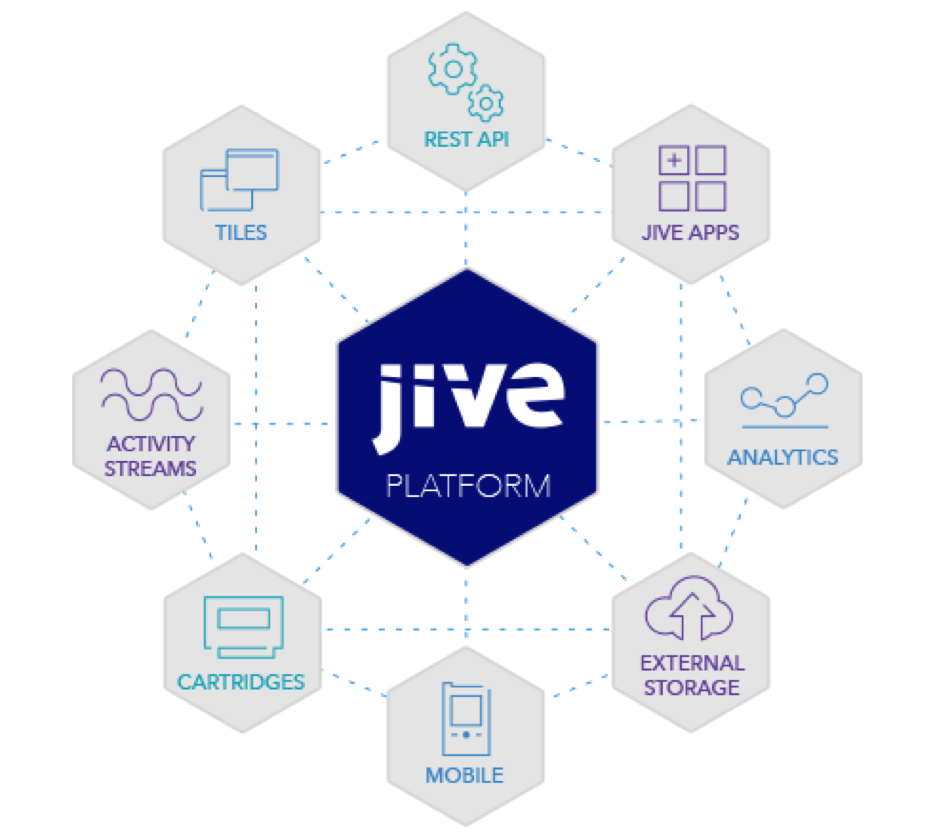Jive Collaboration Hub
 The current enterprise landscape often involves using disparate systems with disparate interfaces. There are engineering servers, content management systems, supply chain management systems, version control systems, customer relationship management systems. These systems communicate with each other in varying degrees of effectiveness — both through automation and through manual processes — but they often remain separate silos of information.
The current enterprise landscape often involves using disparate systems with disparate interfaces. There are engineering servers, content management systems, supply chain management systems, version control systems, customer relationship management systems. These systems communicate with each other in varying degrees of effectiveness — both through automation and through manual processes — but they often remain separate silos of information.
Jive recognizes this problem and helps unify these disparate experiences into a powerful collaboration hub where employees can get their work done. Not only does the Jive platform make it easy to bring the value of these other systems into Jive, it also helps get content from Jive to these other systems. Jive can give greater visibility into essential information and facilitate richer collaboration within your community. With the right set of integrations, it is possible to perform complete workflows within Jive. The result is a powerful collaboration-first productivity tool that users love to use that is capable of seamlessly encompassing their enterprise context across distributed systems.
Platform Features & Capabilities
Jive has an extensive history of bringing companies together to help people better connect, communicate and collaborate. It’s this history with Jive-n for Employees and Jive-x for Customers/Partners, that propels Jive to become the collaboration platform that connects people (across all levels) in a seamless collaboration experience. The Jive developer platform enables IT and partner developers to build highly immersive and contextually relevant collaboration solutions catering to any number of these audience cross-sections to help people realize their collaboration needs across multiple systems.
The best way to extend the Jive Platform is for developers to build a Jive add-on. Add-ons are a modern Jive extension paradigm that are upgrade safe, hot deployable and 100% dependent on the official REST API (JSON) and UI extension points. They represent all the platform capabilities that developers can use to build collaboration experiences around the Jive platform.
- Seamlessly integrate external systems into Jive to create highly contextual and unified collaboration experiences that encompass the best of both systems. Jive’s Apps framework powers this embedded capability, and the Tiles framework supports a more modular cross-system dashboard use-case.
- Aggregate rich activity streams from numerous systems and unify them into a single collaboration place. This use-case is so popular, Jive created the Simple Stream Integration Builder to build your first production-ready Jive integration in minutes, without even an IDE!
- Tap into over 100 discrete Jive activity events to understand user behavior by using Jive’s Analytics platform. Developers can create smarter integrations, while businesses can use the information to better structure team dynamics and quantify business value.
- Support an enterprise eco-system of choice without losing collaboration context. While Jive offers a rich “collaboration first” platform to initiate most day-to-day tasks, personal preference still dictates how work gets done. With Jive’s cartridge, mobile and external storage frameworks, developers can bring the collaboration context with them to other services to keep the conversations flowing.
For more developer details about the Jive platform, please read the Developer Introduction.
